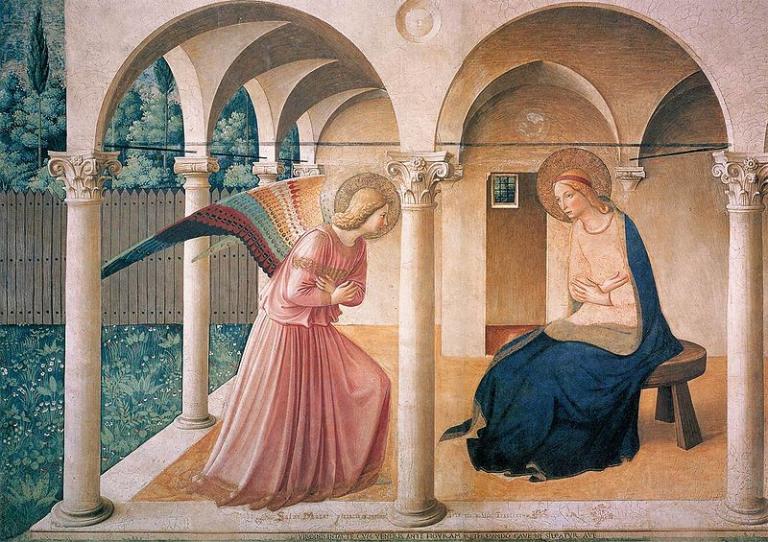
This account of the Annunciation, as it’s called, occurs only in the gospel of Luke. Such stories, told from Mary’s perspective, have suggested to many readers that Mary herself was among the “eyewitness” sources used by Luke in the composition of his gospel (see Luke 1:2). I find that very plausible.
Note the occurrence of the term “the Most High” (hypsistos) in both 1:32 and 1;35. Latter-day Saints see this, of course, as a reference to the Father, as distinct from the Son. And some contemporary scholarship seems to concur, recognizing a clear difference between Jesus and his Father and saying that the earliest Christians, too, saw that difference.
The word translated as “handmaid” in Mary’s expression of submission to the will of God in the King James Version of Luke 1:38 is doulé (δούλη), which is, literally, “(female) slave.” She is turning her will over entirely to the Lord.
***
This story of a private visit between two miraculously expectant women points to something very important and distinctive about the gospel of Luke:
All the narratives in Luke 1-2 are unique to Luke, and it is often assumed that his source for these stories was Mary herself. Indeed, Luke explicitly says that he is recording things he has heard from “eyewitnesses” (Luke 1:2). Some of the stories in Luke are things only Mary could have known (the annunciation, 1:26-38; meeting Elizabeth, 1:39-56; details of Christ’s birth, 2:1-7). She must have been their ultimate source and perhaps told them to Luke personally. All of Luke’s stories emphasize Mary’s acts, inner thoughts and psychological state (2:19, 2:51). Luke also emphasizes the role of other women who were filled with the Holy Spirit: Elizabeth, the mother of John the Baptist, and Anna, the temple prophetess (Luke 2:36). Luke 1:46-55 is Mary’s inspired hymn upon meeting Elizabeth (often called, from the first word of its Latin translation, the “Magnificat”).
S. Kent Brown’s important volume The Testimony of Luke (Provo: BYU Studies, 2015), part of the ongoing project of producing a multivolume, multiauthor “Brigham Young University New Testament Commentary,” offers this comment (at page 115) regarding Luke 1:39’s rather vague reference to “a city of Judah”:
Because the name Judea appears in 2:4, we wonder why Luke writes two names within a few lines of one another for esssentially the same geographical region. In response, he may have been influenced by his source. Some suggest that in 1:39 Luke is referring to the town of Jutta or Yutta which lies to the south of Hebron, or generally to the territory of Judea. To be sure, Hebron is one of the cities assigned to priests and Levites for their inheritance, which makes this possibility intriguing as a potential hometown for Zacharias and Elisabeth (see Josh. 21:11-13).












